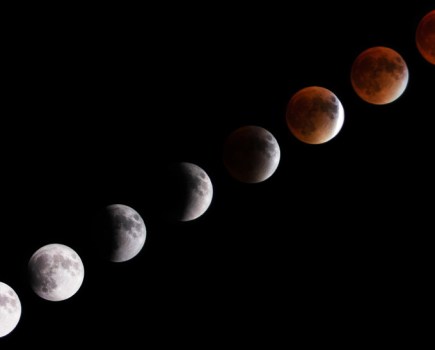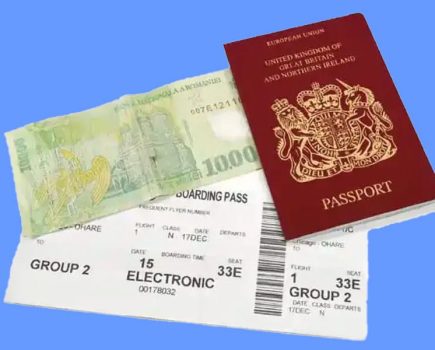The White Stuff
 Use a telephoto lens to isolate interesting abstract compositions.
Use a telephoto lens to isolate interesting abstract compositions.
Canon EOS 5D, 70-200mm
Pull back the curtains on a cold winter?s morning and the thought of going back to a warm bed will seem a very attractive option. However, if snow has fallen overnight, you might instead want to get your camera bag for an early start at capturing a pristine winter wonderland. We don?t get that much snow in the UK these days, so when it does appear you need to make the most of it.
If the weather forecast is predicting snow, or if the temperature has dropped below freezing, you?ll need to get yourself ready the night before so you can leave at a moment?s notice at dawn. You obviously need to pack your equipment and enough clothing to keep yourself warm, but you also want to make a plan of where to go.
When shooting in snow and ice, it?s best if you don?t have to travel too far. Apart from the icy conditions, you also don?t have long before humans, vehicles and animals disturb the pristine snow left on benches, fences and roads, not to mention the white blankets covering the parks and lawns. This is why I have a few local haunts I like to frequent. Staying local gives you more time and allows you to become familiar with the dazzling subject matter. The beauty of this kind of weather is that a sprinkling of snow or ground frost transforms even the most mundane subjects or locations into wonderful viewpoints. Therefore, shooting a familiar location that you perhaps shot in spring or summer will make a good contrast to the original.
 Even when it isn’t a beautiful morning, you can still find interesting images in your home town. Canon EOS 5D 70-200mm
Even when it isn’t a beautiful morning, you can still find interesting images in your home town. Canon EOS 5D 70-200mm
If you can?t think of any local subjects and really want to explore, your nearest scenic village is another good choice for location, as snow and cottages always go well together, as do village churches. You may think these are a little corny, but this is why they work well. However, great images don?t come simply by pressing your shutter. Dazzling displays of wintry snow and ice come with their own unique set of obstacles, for which you?ll need to refine your usual methods.
Exposure
There are several ways to achieve correct exposure with the predominately white scenes associated with winter shooting. The first is to compensate your camera?s metering. By default, your camera?s integral metering wants to record everything as a mid-grey colour. Therefore, your crisp, white snow scenes will be underexposed and look drab and too dark. This can happen whether you are using centreweighted metering or sophisticated matrix metering to work out your exposures. To compensate for this, you need to overexpose the scene by 11⁄2-2 stops. You can do this by setting this amount on the exposure compensation dial or by switching to manual and setting either the shutter speed or aperture over what the camera?s reading in the viewfinder is suggesting. So, if it reads 1/125sec at f/16, then you should set the shutter speed to 1/30sec at f/16 or 1/125sec at f/8. Both ways will give 2 stops extra exposure and this will clean up the whites and show the snow as it is meant to look.
A second way of achieving correct exposure is to use a separate handheld meter. This takes an incident light reading to measure light, as opposed to reflected, as the camera?s own meter does. As it isn?t influenced by the light bouncing off the white snow, it should give an accurate reading every time. You can also take a reading off a small piece of mid-grey card (with 18% reflectance) held at arm?s length, in the same light as your main scene. This achieves the same incident light reading, giving a more accurate exposure.
 This image was almost monochrome in appearance, so I changed it to black & white to make the most of the contrasting tones. Canon EOS 5D, 70-200mm 1/250sec at f/11 ISO 400
This image was almost monochrome in appearance, so I changed it to black & white to make the most of the contrasting tones. Canon EOS 5D, 70-200mm 1/250sec at f/11 ISO 400
Lens choice
Zoom lenses are an ideal choice in these conditions, as you don?t want to keep changing lenses in the cold. A couple of zooms are perfect, so you have one to cover wide-to-standard focal lengths for overall scenes, and a mid-to-long telephoto for isolating details. If you have an ultra-zoom lens, covering focal lengths from very wide to long telephoto, you won?t have to change lenses at all and be ready for all situations.
A blue sky and bright sunshine are the perfect combination to make the most of fresh snow. Watch out for the sun, though, which will be much lower in the sky at this time of year and can lead to flare. To avoid this, use a lens hood at all times or shield the lens with your hand when taking a picture. If it?s an overcast day, however, don?t despair. In these conditions, it?s worth ignoring the wider view to concentrate more on the smaller details within the landscape, such as close-ups on the ground and flowers covered in frost.
Take precautions
Once your shoot is over, remember to take precautions when you get home. First remove the film or cards from your camera and leave your gear in the bag for an hour or two to avoid condensation. When you finally check your images, you?ll be glad you made the most of the cold snap and no doubt will have some rewarding images that were worth getting out of bed for.
 This bright red bench in a local park adds a splash of colour to the otherwise bleak conditions. Canon EOS 5D, 70-200mm
This bright red bench in a local park adds a splash of colour to the otherwise bleak conditions. Canon EOS 5D, 70-200mm
Potential subjects
Your local park will provide lots of opportunities for shots as there will be plenty of trees covered in snow, which make good abstracts, and leaves on the ground for close-ups. Even the park bench or children?s playground can throw up some interesting abstracts as the snow wraps itself around the metal bars.
Look out for everyday objects that stand out in these conditions, which you would otherwise ignore. A red bench, for instance, covered with snow, will look great and adds a welcome splash of colour to a shot. If you got up early before heading off to work or have the day off, don?t forget to capture other people heading out in the wintry conditions. If it is still snowing outside, showing the bleak conditions or kids enjoying the snow can be another way of capturing the effects of a winter?s day. People sledging at the local park can provide some great action images, too.
 Use a polariser
Use a polariser
A polariser is ideal for taking your winter shots, as it reduces glare from the bright snow and adds a rich colour to any blue sky. This adds extra contrast to a scene and gives the image extra punch. It also helps when photographing frozen water or icicles, again by reducing any glare and reflections, making the main subjects stand out more. Mamiya RZ67, 90mm, 1/8sec at f/22, Fujichrome Velvia, polariser+81b

To see more of Craig Roberts pictures please visit his website www.craigrobertsphotography.co.uk






